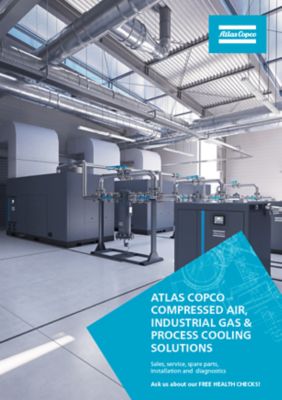Fire suppression and prevention with nitrogen for industrial facilities
With industrial buildings, warehouses, and storage rooms, it's important to invest in the right fire suppression and prevention measures. This is essential for minimizing the damage a fire can cause. A common method for achieving this is using nitrogen (N2) as both a preventative measure and in a sprinkler system.
When implemented in fire prevention, N2 is injected into a room to reduce the oxygen (O2) present in ambient air. This is because the air we breathe consists of 21% O2, 78% N2, and 1% other gasses. If O2 levels are reduced to 15% or lower, the air can't keep burning the flame.
If used in a sprinkler system, N2 tackles two issues. It doesn't impact electronic equipment and reduces corrosion. The latter is because both moisture and O2 can cause rust in sprinkler systems.
It’s also worth mentioning that you could benefit from lower insurance premiums with an N2 fire prevention and suppression system. Aside from significantly lowering potential damages and loss, using N2 demonstrates to insurance companies a proactive investment in fire safety and risk management.
To help you better understand the benefits of N2 for fire suppression and prevention, we've developed two articles. Read on to learn more about what they contain:
Prevention
A good fire prevention plan involves smoke detectors, proper flammable material storage, routine fire safety inspections, and electrical system maintenance. It's also recommended to develop a fire plan, install good ventilation, and train staff on how to best handle a fire.
A fire needs three things: oxygen, a source of fuel or flammable materials, and an ignition. If not enough oxygen is present, a fire simply cannot start. As part of this, you can use N2, like previously pointed out. The reason this gas is a good choice is because it's already found in ambient air. It's also non-toxic and widely available. In general, an N2 prevention system consists of N2, piping, and nozzles to feed the gas into a room. With this you'll want a readily available supply of N2.
That said, it's a good idea to have an on-site N2 generator. We cover this topic briefly below. Additionally, if you'd like more information on the different stages of fire management, which include prevention, protection and suppression, read our related article.
Following proper procedures
It’s important to add that with N2 prevention, you want specialized staff trained to set up, manage, and maintain the system. This is because you'll need to ensure regulations and protocols are followed.
These individuals are also important for making sure the fire prevention system is effective and healthy for humans. That said, most N2 prevention systems have measures to detect issues.
Fire suppression
The main reason to use N2 for fire suppression is due to the fact that it doesn't rely on water/liquid to put out flames. Instead, the inert gas N2 is ejected. You can read more about this in a related article on N2 for fire suppression. It further explains how N2 plays a role.
On-site generation
Whether using N2 for fire prevention or suppression, it's recommended to use an on-site N2 generator. This is because you'll be able to control both N2 purity and supply. With that, fire suppression requires 90-97% N2 purity, and you'll want slightly higher for prevention.
With membrane generators capable of producing 99.5% N2 air purity, they are a good economical option. Alternatively, if you need more N2 flow, then a pressure swing adsorption (PSA) generator is ideal. That said, PSA generators cost more than membrane and may not be worth the expense for fire applications.
In any case, on-site N2 generation is much cheaper than receiving N2 via deliveries. In general, you can save up to 80%. This is because you won't need to pay for transport and other logistical expenses. In addition, there will be less CO2 generated from transport vehicles.
We hope this article provides a good starting point for learning more about fire suppression and prevention. If you'd like more information about the topics covered, feel free to reach out. Our team is happy to point you in the right direction. This includes our full range of on-site N2 generator solutions. To get started, reach out today!

